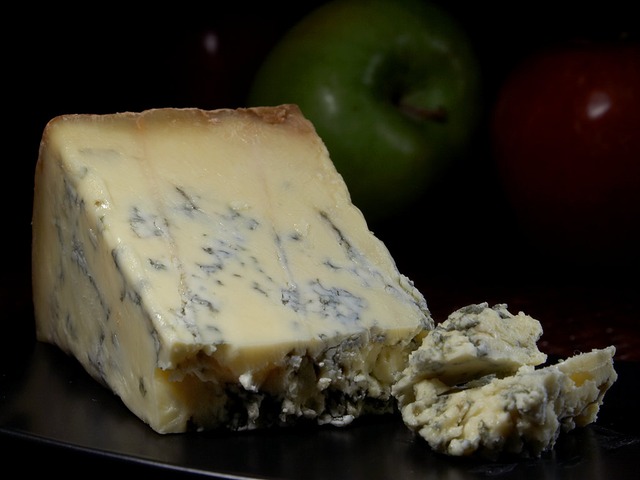Why is blue cheese blue?
We love blue cheese. Okay, half of our team love blue cheese. The other half can’t imagine how we can look at the fuzzy blue veins of mould and want to add it to our savoury biscuits.
Blue cheese is a classification of cheeses that describes those that have cultured Penicillium mould, and you either love or hate the distinctive furred texture and sharp, salty taste. Legend tells that it was first discovered by a young man who had forgotten his lunch of bread and cheese in a cave near the village of Roquefort, and when he returned found that he enjoyed the taste of the mould that had grown on his snack. We don’t know if this story is true, but we do know that humans have been enjoying the delicacy for at least the last 9,000 years!

Today, the mould used in blue cheese making is Penicillium – yes, the antibiotic. It’s perfectly safe to eat because it lacks the toxin production that occurs in other types. The spores are injected into the cheese either before or after the curds have started to form and they are traditionally aged in caves.
But what about that awful smell? Okay, that is a bit more gross. The smell of many kinds of blue cheese is due to the bacteria Brevibacterium linens – and it smells like feet because its the same bacteria causing that smell too.
If you haven’t given blue cheese a try, perhaps it’s time to give it another chance. Now you know it’s safe, you just have to stomach the smell. And let us know what you think!
For more science and technology articles, pick up the latest copy of How It Works from all good retailers or from our website now. If you have a tablet or smartphone, you can also download the digital version onto your iOS or Android device. To make sure you never miss an issue of How It Works magazine, subscribe today!
Other articles you may like:
Can we get addicted to cheese?
How do the holes get in Swiss cheese?
Does cheese cause nightmares?




